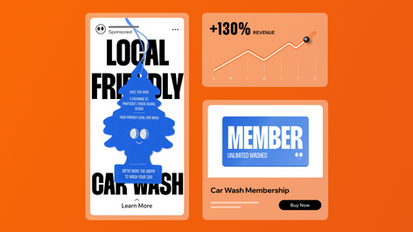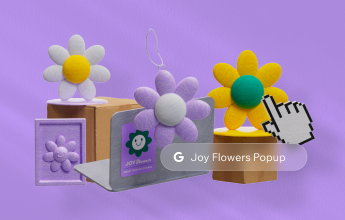Website Design Nyc Explained
Website Design Nyc Checklist
Website Design Nyc
Web design is crucial for any business looking to establish a strong online presence. A well-designed website not only attracts visitors but also keeps them engaged and interested in your brand. With constantly evolving technology and trends, it is essential to stay updated on the latest web design ideas to ensure your website remains visually appealing and user-friendly. In this article, we will discuss some creative web design ideas that can help elevate your website and make it stand out from the competition.

Website Design Nyc Best Practices
Website Design Nyc
Importance of Web Hosting
Web hosting is essential for any website to be visible on the internet. Without web hosting, your website would not be accessible to users. When you sign up for a web hosting service, you are essentially renting server space where your website files are stored. The web hosting provider ensures that your website is available to users 24/7, and also provides technical support and maintenance services to keep your website running smoothly.
Another important aspect of web hosting is website speed and performance. The speed at which your website loads can have a significant impact on user experience and search engine rankings. A reliable web hosting provider will ensure that your website loads quickly and is accessible to users across the globe. In addition, web hosting providers offer security features such as SSL certificates and regular backups to protect your website from cyber threats and data loss.
Different Types of Web Hosting
There are several types of web hosting services available, each with its own set of features and benefits. The most common types of web hosting are:
1. Shared Hosting: Shared hosting is the most basic and affordable type of web hosting. In this setup, multiple websites share the same server resources, including storage space, bandwidth, and CPU power. Shared hosting is ideal for small businesses and individuals with low traffic websites.
2. VPS Hosting: VPS (Virtual Private Server) hosting is a step up from shared hosting. In VPS hosting, websites are hosted on virtual servers that mimic dedicated servers but share server resources with other websites. VPS hosting offers more control and customization options compared to shared hosting.
3. Dedicated Hosting: Dedicated hosting provides users with their own physical server. This type of hosting is ideal for websites with high traffic and resource-intensive applications. Dedicated hosting offers the highest level of performance and security but is also the most expensive option.
4. Cloud Hosting: Cloud hosting is a flexible and scalable hosting solution that utilizes cloud infrastructure to host websites. In cloud hosting, websites are hosted on a network of virtual servers that can be easily scaled up or down based on demand. Cloud hosting is a cost-effective option for websites with fluctuating traffic levels.
Factors to Consider When Choosing a Web Hosting Provider
When choosing a web hosting provider for your website, there are several factors to consider to ensure that you are getting the best service for your needs. Some of the key factors to consider include:
1. Reliability and Uptime: It is crucial to choose a web hosting provider with a proven track record of reliability and uptime. Look for providers that guarantee uptime of at least 99.9% and have robust infrastructure to prevent downtime.
2. Performance and Speed: Website speed and performance are critical for user experience and search engine rankings. Choose a web hosting provider that offers fast servers and optimized performance for your website.
3. Security Features: Security is a top priority for websites, especially those that handle sensitive information. Look for web hosting providers that offer SSL certificates, regular backups, and other security features to protect your website from cyber threats.
4. Customer Support: If you encounter technical issues or need assistance with your website, reliable customer support is essential. Choose a web hosting provider that offers 24/7 support via multiple channels such as phone, email, and live chat.
5. Pricing and Plans: Compare pricing and features across different web hosting providers to find a plan that fits your budget and needs. Consider factors such as storage space, bandwidth, and scalability when choosing a hosting plan.
Importance of Web Design
First impressions matter, and in the digital age, your website is often the first point of contact between your business and potential customers. A poorly designed website can deter visitors, leading to high bounce rates and lost opportunities. On the other hand, a well-designed website can capture the attention of users and keep them engaged, ultimately driving conversions and fostering customer loyalty.
In addition to aesthetics, web design also plays a crucial role in user experience. A website that is easy to navigate, with clear navigation menus and intuitive layouts, can help users find the information they are looking for quickly and efficiently. This can lead to higher engagement and increased time spent on the site, which can translate into higher conversions and sales.
Furthermore, web design can also impact search engine rankings. Search engines like Google prioritize websites that are well-designed, mobile-friendly, and optimized for speed and performance. By following best practices in web design, you can improve your website’s visibility in search results and attract more organic traffic.
Tips for Effective Web Design
Now that we have established the importance of web design, let’s discuss some tips for creating an effective website:
1. Define Your Goals: Before starting the design process, it’s essential to clearly define your goals and objectives for the website. What do you want to achieve with your website? Are you looking to drive sales, generate leads, or increase brand awareness? By understanding your goals, you can tailor your website design to meet those objectives.
2. Know Your Audience: Understanding your target audience is crucial for creating a website that resonates with your visitors. Consider factors such as demographics, preferences, and behaviors to tailor the design and content of your website to meet their needs and expectations.
3. Keep it Simple: Clean and minimalist designs tend to perform better than cluttered and busy layouts. Keep the design simple and focus on highlighting essential information and calls-to-action. Avoid using too many colors, fonts, and graphics that can overwhelm users and distract from the main message.
4. Mobile Optimization: With more and more users accessing websites on mobile devices, it’s crucial to ensure your website is optimized for mobile responsiveness. A mobile-friendly design will provide a seamless browsing experience across all devices and improve user engagement and retention.
5. Use High-Quality Images and Graphics: Visual elements play a significant role in web design, as they can help capture the attention of users and convey your brand message effectively. Utilize high-quality images and graphics that are relevant to your content and align with your brand identity.
6. Clear Navigation: Easy navigation is essential for helping users find their way around your website. Use clear and intuitive navigation menus, breadcrumbs, and internal linking to guide users to relevant pages and improve their overall browsing experience.
7. Loading Speed: Slow loading times can frustrate users and lead to high bounce rates. Optimize your website for speed by compressing images, minifying code, and utilizing caching mechanisms to enhance performance and provide a seamless browsing experience.
8. Test and Iterate: Once your website is live, it’s essential to continuously monitor its performance and gather feedback from users to identify any areas for improvement. Conduct A/B testing, analyze user behavior, and make iterative changes to optimize your website for better results.

Website Design Nyc Challenges
Website Design Nyc
In today’s digital age, having a visually appealing and user-friendly website is crucial for the success of any business. A well-designed website can help attract new customers, build credibility, and increase conversion rates. However, designing a website is not as simple as it may seem. It requires a strategic and systematic approach to ensure that the final product meets the needs and expectations of both the business and its target audience. In this article, we will discuss the website design process in detail, outlining the key steps involved in creating a successful website.
Step 1: Define the Purpose and Goals
The first step in the website design process is to clearly define the purpose and goals of the website. This involves identifying the target audience, understanding their needs and preferences, and determining the desired outcomes for the website. For example, is the website meant to generate leads, drive sales, provide information, or showcase products and services? By having a clear understanding of the purpose and goals of the website, you can better tailor the design and content to meet these objectives.
Step 2: Conduct Research
Once the purpose and goals of the website have been defined, the next step is to conduct research. This involves analyzing the competition, researching industry trends, and gathering insights into the preferences and behaviors of the target audience. By conducting thorough research, you can gain a better understanding of what works and what doesn’t in your industry, helping you make informed design decisions.
Step 3: Create a Wireframe
After conducting research, the next step in the website design process is to create a wireframe. A wireframe is a visual representation of the layout and structure of the website, showing the placement of various elements such as navigation menus, headers, footers, and content sections. Creating a wireframe allows you to plan the overall design and functionality of the website before moving on to the visual design phase.
Step 4: Design the Visual Elements
Once the wireframe has been finalized, the next step is to design the visual elements of the website. This involves creating a visually appealing and consistent design that reflects the brand identity and resonates with the target audience. Elements such as color scheme, typography, imagery, and layout are carefully considered to create a cohesive and attractive design that conveys the desired message and engages users.
Step 5: Develop the Website
After the visual design has been approved, the next step is to develop the website. This involves coding the design into a functioning website using HTML, CSS, and other programming languages. During the development phase, the website is tested for functionality, responsiveness, and compatibility across different devices and browsers to ensure a seamless user experience.
Step 6: Test and Optimize
Once the website has been developed, it is essential to test and optimize its performance. This involves conducting usability tests to identify any usability issues, testing load times to ensure fast page speeds, and optimizing the website for search engines to improve visibility and accessibility. By testing and optimizing the website, you can ensure that it meets the needs and expectations of users, leading to better engagement and conversions.
Step 7: Launch and Monitor
The final step in the website design process is to launch the website and monitor its performance. This involves deploying the website to a live server, promoting it to the target audience, and tracking key metrics such as traffic, engagement, and conversions. By monitoring the performance of the website, you can identify areas for improvement and make informed decisions to optimize its effectiveness over time.

